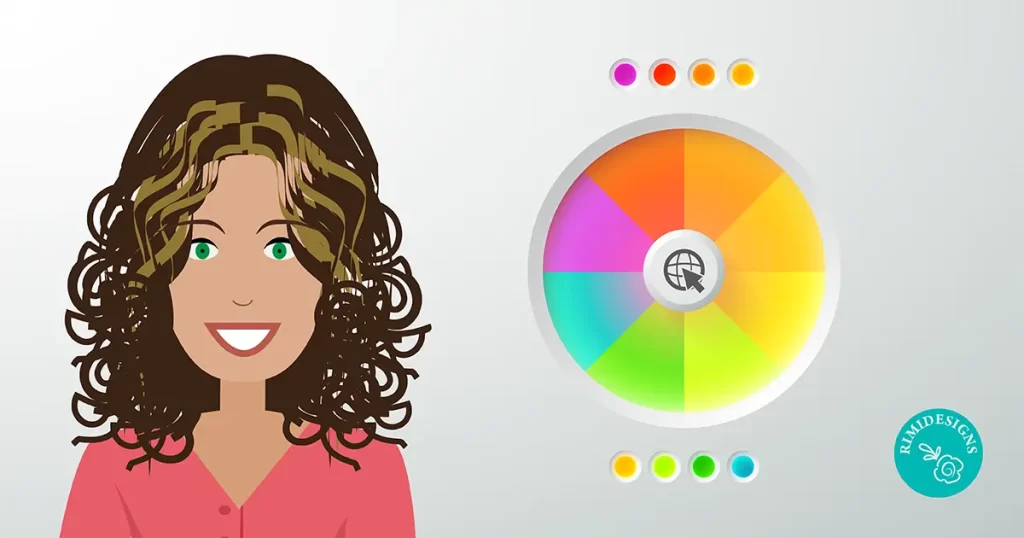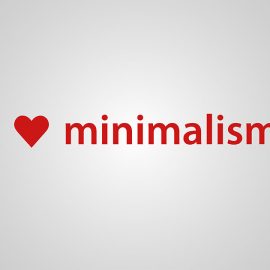
How to Boost Your Website Conversions by Using Colour Psychology
When it comes to website design, one of the more important decisions you’ll make involves choosing the right colours. It’s a choice that can make or break your project, especially when you consider all the moving parts that go into creating a successful website.
Nowadays, chances are good that if own a website, you own a business as well. And the most important thing for a business website is to have a good conversion rate. If your website isn’t converting, your company might as well hang up a “Closed for Business” banner. That’s why it’s important your website’s colour scheme is planned, intentional – and most importantly – optimised for conversion.
In this article, we’ll take a look at how colours influence our lives and how they can be used to improve how your potential customers or clients perceive your site and brand.
Why is colour so important?
Colour plays an important role in our everyday lives. It connects to our feelings in a unique way, making it a powerful marketing tool to harness when making design decisions.
Your colour choices need to reflect the message you want to share about your upcoming event or product. Usually, colour is the first thing that will draw the eye and visually guide your visitors, which is why it’s important that the colours in your design are purposeful and have meaning in their use.
Did you know that 85 per cent of shoppers base their decision on colour alone? Thus, proper use of colour leads to an 80 per cent increase in brand recognition. Various studies and tests have proven that colour can increase memory, engage and increase participation, as well as inform.
So let’s take a look at how colour theory works and how to land on the right colour for your website.
Colour theory
Colour theory can be broken down into three major parts, as it refers to web design.
Contrast
In layman’s terms, contrast is the difference between 2 colours. Contrast serves 2 functions in web design: it establishes readability, as well as draws the viewer’s attention towards a specific element on the page.
Whenever you are in doubt, the best practice is to choose a very light colour for the background and a very dark colour for the text itself.Complementation
Complementary colours are found opposite each other on the colour wheel. For example, red’s complementary colour is green and blue’s complement is orange.
When used correctly, these colours can accent each other and make a very effective colour scheme.Vibrancy
This refers to the general mood particular colour sets: the brighter, warmer colours (red, orange and yellow) tend to energise us, while darker, cooler shades (green, blue and purple) tend to be more relaxing and tranquil.
Colour meanings and culture
Colours have different meanings across different cultures. The way we perceive a certain colour may not be the same as someone from Japan or the Middle East.
When planning a website, it’s important to understand who your target audience is and how that particular culture views colour associations.
Here’s a breakdown of colours and their meanings cross-culturally.
Red
In western cultures, such as North America and Europe, red is the colour of passion and excitement. It symbolises danger, love, excitement and power but it can also carry a negative connotation when connected to the countries that used to belong to the Eastern communist block.
In Eastern and Asian cultures, red represents happiness, joy and celebration; and as such, it is often worn by brides on their wedding day because it is thought to bring good luck and happiness.
In the Middle East, red represents danger and caution. Some also consider it the colour of evil.
Orange
The West sees orange as the colour of harvest and autumn. Traditionally, in the US, orange signifies autumn, while Indian cultures consider orange a sacred colour and for Japan, orange symbolises courage and love.
Finally, the Middle East associates orange with mourning and loss.
Yellow
In Western cultures, yellow is associated with warmth, summer and hospitality. Oddly enough, in Germany, yellow is associated with envy, whereas most of the rest of the world associates this feeling with the colour green.
In Eastern and Asian cultures, yellow is not only considered sacred but imperial, as well. In India, it symbolises commerce.
Contrary to that, in Latin America and Egypt, yellow is associated with death and mourning. The rest of the Middle Eastern cultures view yellow as the colour of happiness and prosperity.
Blue
Many Western cultures use blue for bank logos because it represents trust and authority. It’s also associated with the birth of baby boys and considered to be calming, soothing and peaceful. In a negative context, it represents sadness and depression.
In Eastern and Asian cultures, blue is associated with immortality and strength. Contrary to the western world, blue is a feminine colour in China.
In Latin America, blue is often associated with religion, due to the high presence of the Catholic church.
The Middle East sees blue as safe and protecting, as it is the colour associated with heaven, spirituality and immortality.
Green
While Western cultures associate green predominantly as the colour of the Irish and luck, green also refers to nature, the environment, the protection of environmental causes and progress. In a negative context green symbolises envy or jealousy.
In Eastern and Asian cultures, green is the colour of nature, fertility and youth. However, it’s also associated with infidelity and exorcism.
In Latin America green is the colour of death.
For the majority of the Middle East green represents strength, fertility, luck and wealth and is most commonly associated with Islam.
Purple
In Western cultures, as well as most Eastern and Asian cultures, purple is the colour of royalty and is associated with wealth and fame.
On the other hand, Latin America and Thailand see purple as the colour of mourning and death.
The Middle East sees purple as symbolic for wealth.
Pink
In Western cultures, pink is the colour of femininity and signifies the birth of a daughter. It also represents sweetness, childhood or fun.
In Eastern and Asian cultures, pink is also considered feminine, where it also signifies marriage. The exception is China which, as stated above, sees blue as the feminine colour.
In Latin America, pink is often used as a colour for buildings, while the Middle East doesn’t tie pink with anything in particular.
Brown
Western cultures associate brown with the earth but also health or even barrenness. Brown is stable, dependable and wholesome.
In Eastern and Asian cultures brown is the colour of mourning, while in Latin America brown discourages sales and is generally considered disapproving.
Middle Eastern cultures associate brown with the earth and comfort.
Black
The Western world sees black as the colour of finality, death, formality and mourning, as well as the colour of control and force.
In eastern and Asian cultures, black represents masculinity and is the colour for boys in China. It also symbolises wealth, health and prosperity, while in Thailand and Tibet, black is most closely associated with evil.
Like in the East, Latin America associates this colour with masculinity and mourning. Interestingly enough, Middle East uses black to symbolise both rebirth and mourning.
White
In Western cultures, white is the colour of purity and peace. It is the colour associated with weddings, hospitals and holiness.
However, in Italy and Eastern and Asian cultures, white is used for funerals and represents sterility, mourning, unhappiness and misfortune.
In Latin America, white has many of the same associations as in North America and is connected to purity and peace.
Similarly to black, the Middle East associates both purity and mourning with white.
Colour and the conversion funnel
A conversion funnel helps you visualise and understand the flow your potential customers go through after they land on your website and take the desired action. In its most basic form, the conversion funnel has 4 main elements: awareness, interest, desire, and conversion. Let’s break them down.
Awareness
Awareness is all about attracting potential customers or clients to your website. This is the part of the funnel where they get introduced to your brand. They get familiar with your business, your company culture and your mission statement. This is where colours start to play a major role.
By knowing who your target audience is and knowing the emotions you want to evoke, you can start planning your overall colour scheme.Interest
At this stage, you are working to pique the interest of your website visitors. You want to guide them to explore further and dive deeper into your website. Your energy should be focused on polishing headlines, images, banners and writing a compelling copy.Desire
Now that you have their interest, you have to make them really want your product. Your website’s imagery, great product options, videos and testimonials should provide all the necessary information that they need in order to take action.
During the website planning stage, you should choose 3 colours that will represent your brand’s website. The general rule of thumb is typically to use neutral colours, such as white or black, for the background and use your main brand colour to create a visually striking effect.
Your primary brand colour could be used for links, navigation menus and headlines. The third colour should be an accent colour from your brand palette that will serve one specific purpose.
That brings us to the fourth stage of the conversion funnel.Conversion
This is where the visitors take your desired action or in other words, convert. What that action is, depends entirely on you but the main goal is that they take action.
This is where you need to draw their attention to that one single action. The best way to do that? Use the accent colour from your colour scheme. This is where you want a colour that compliments your colour scheme but is contrasting enough to draw the eye to your main call-to-action.
In other words, if your website uses mainly blue, then it would make little to no sense to make your call-to-action button a darker shade of blue. Using a colour like orange or a shade of yellow or red would be more beneficial.
Do, however, make sure your call-to-actions contrast with your brand colours enough to stand out, but not clash. You want it to draw people’s eye, pushing them toward conversion, not scare them off with an unappealing colour scheme.
How to colour optimise your business website
Now that you know what colours mean and how the conversion funnel works, let’s discuss how to come up with a colour scheme for your business website that is optimised for conversion.
Planning your website colour scheme is an integral part of your conversion strategy. Your personal colour preference matters very little in this respect.
Before you even embark on that stage, you should bear in mind what the primary goal of your website is and who your target audience is. Based on your audience, your colour scheme will be different if your target audience is female then that of someone whose target audience is teens and young adults.
How to determine the best colour for your call-to-action
Unfortunately, there is no clear-cut answer to this question. In terms of call-to-action buttons on the web, red, orange and green are predominantly used.
When you consider the fact that green usually signifies GO, it’s no surprise that many have tried to translate that to the web. However, a number of studies have shown that green is not the optimal choice for a CTA.
A recent study showed that red buttons outperformed the green ones with a 21 per cent increase in conversion rate. Similarly, another study showed a dramatic increase in conversions when a red button replaced a green one, improving conversions by 34 per cent.
On the other hand, Amazon shows that orange can be used effectively as a call-to-action colour. If you look at their website, you’ll notice their most important call-to-actions are orange, which is an excellent choice for a company that wants to come off as approachable as possible.
SOURCE: WPMU DEV



